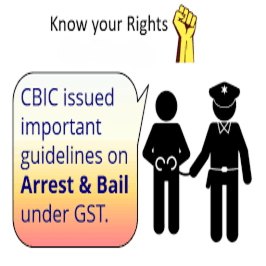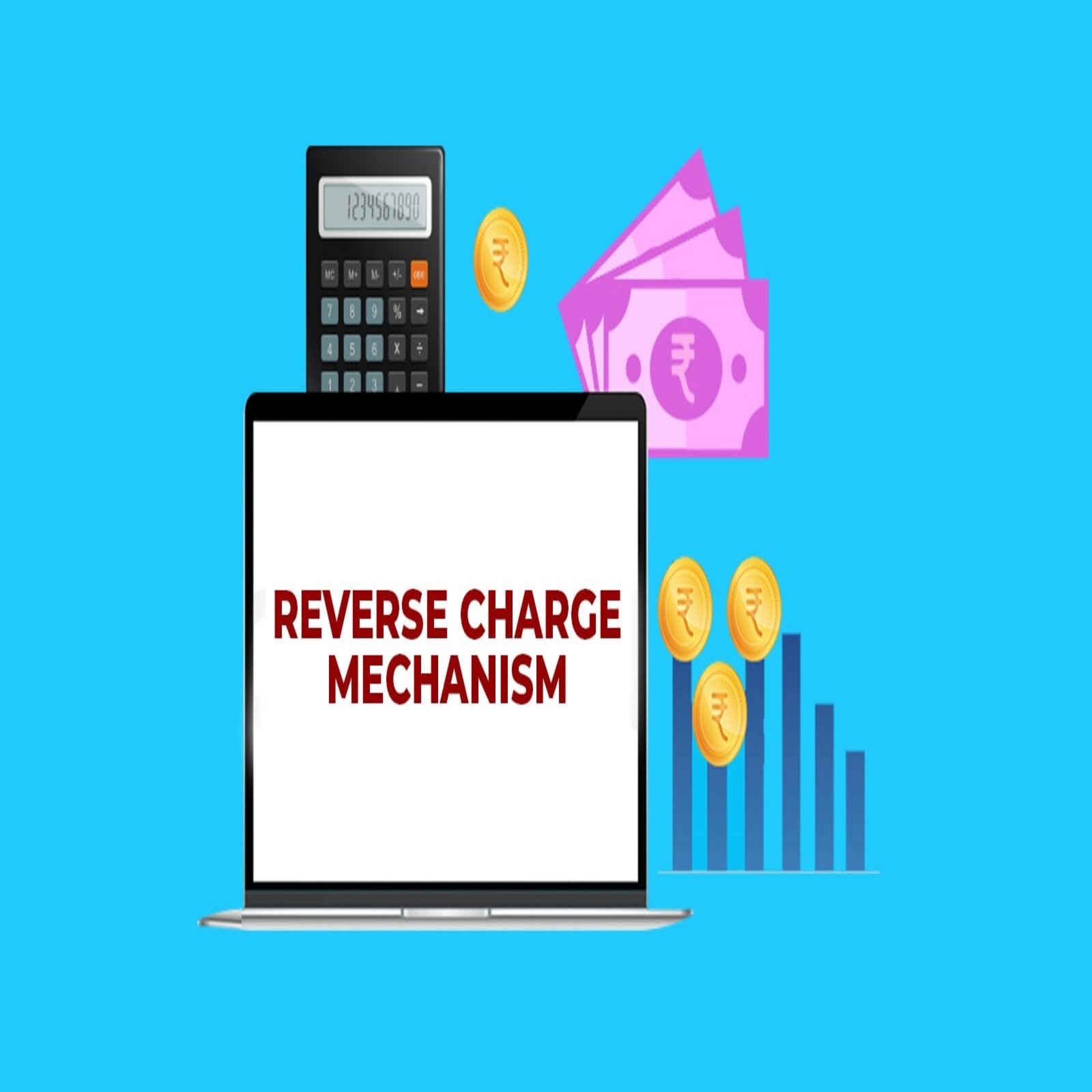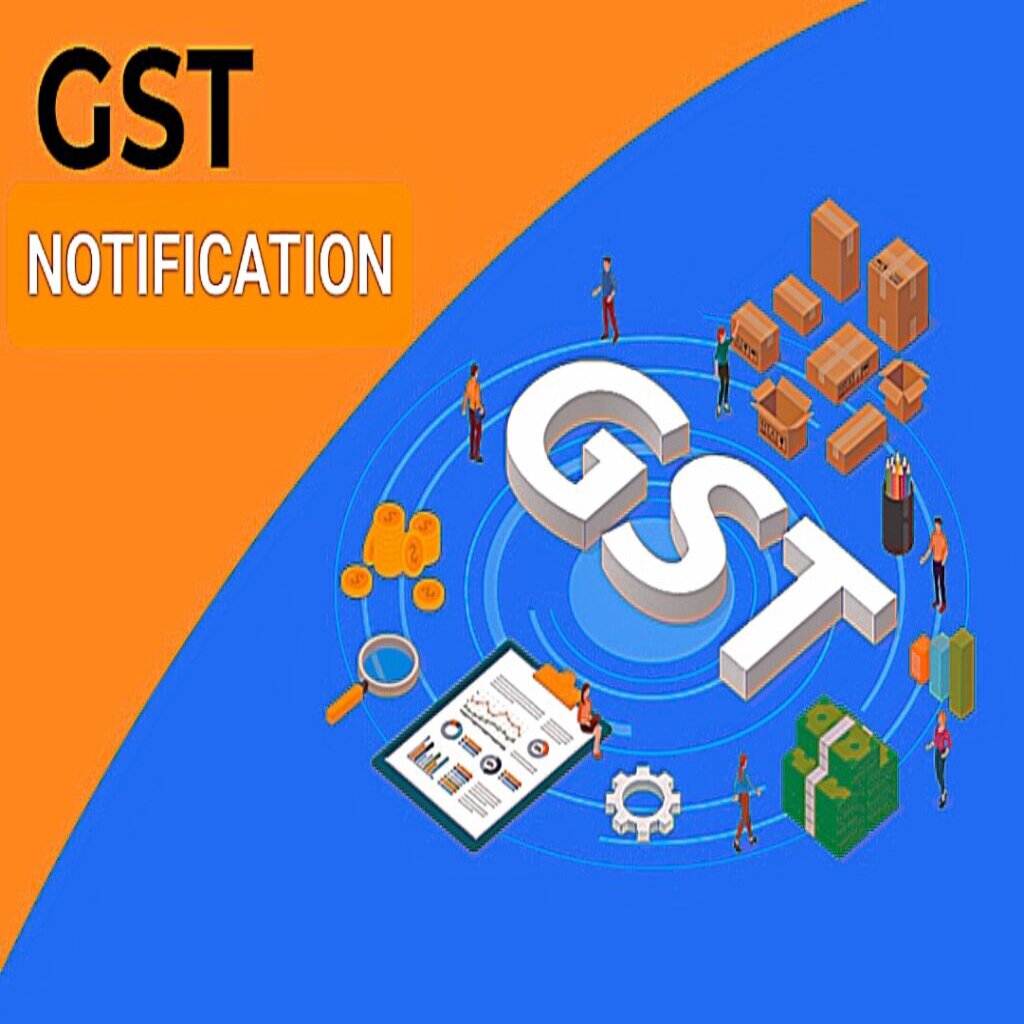Major relief for GST payers: CBIC revises arrest and bail rules under GST.
Now a Goods and Service Tax (GST) proper officer can’t arbitrarily arrest a GST registered person due to a recent amendment in GST arrest instructions. Moreover, now GST proper officers have to explain to the taxpayers about the ‘grounds of arrest’ and also obtain a written acknowledgement from them about their understanding of the explanation.
The Goods and Services Tax Investigation wing has amended para 4.2.1 of its instruction dated August 17, 2022. Amended para 4.2.1 now reads as follows: “The grounds of arrest must be explained to the arrested person and also furnished to him in writing as an Annexure to the Arrest Memo. Acknowledgement of the same should be taken from the arrested person at the time of service of the Arrest Memo.” A notification intimating this amendment in guidelines for arrest and bail in relation to offences punishable under CGST Act, 2017 was published on January 13, 2025 by Central Board of Indirect Taxes and Customs (CBIC).
Click Here to read the instruction
Read below to find out how this new amendment can help you.
Effective implementation of these guidelines will need awareness among businessmen
According to Experts, “This Instruction is expected to reduce arbitrary detentions, which was used as a coercive tool against taxpayers to admit liabilities. These guidelines will not only promote procedural fairness but also provide a sense of security to businessmen. However, effective implementation of the guidelines would require taxpayers knowing about their rights in the first place.”
Experts say sometimes field officers of GST do not follow these instructions and work arbitrarily.
Expert says, “These instructions are good and need to be abided by the field officers. But the irony is that sometimes these instructions about arrest guidelines are not followed at the ground level.”
Expert says that these amended instructions emphasise that there is a significant difference in the phrase ‘reasons for arrest’ and ‘grounds of arrest’. “The ‘reasons for arrest’ as indicated in the arrest memo are purely formal parameters, whereas the ‘grounds of arrest’ would be required to contain all such details in hand of the Investigating Officer which necessitated the arrest of the accused.”
New arrest and bail rule will allow better defense by GST taxpayers
He highlights how the taxpayer who got arrested can now expect a better defence strategy from his/her lawyer since the reason for arrest has to be explained and a copy of it needs to be given at the time of arrest. “This instruction gives clarity to the taxpayer about why he is being arrested and also gives a chance to his lawyer to prepare a defence strategy before the hearing starts in the court. As per this instruction now the grounds of arrest must be explained to the arrested person and also furnished to him in writing as an Annexure to the Arrest Memo,” he says.
Expert says: “The CBIC had issued guidelines outlining the conditions and procedure relating to arrest and bail for offences under the GST legislations. The procedure provided to inform grounds for arrest to the accused. Now, in furtherance of a recent decision by the Hon’ble Delhi Court, the CBIC has amended the guidelines to mandate that an accused must be informed in writing about the facts and circumstances leading to his arrest. This amendment would allow an accused an opportunity to defend himself against custodial remand and also to seek bail. This reinforces the principles of natural justice, ensuring transparency and safeguarding the rights of individuals against arbitrary actions of the tax department.”
Experts explains the above amended Instruction draws a clear distinction between ‘grounds of arrest’ and ‘reasons for arrest’.
He says while the ‘reasons for arrest’ are general, formal justifications like preventing further offenses, the ‘grounds of arrest’ now refer to specific facts known to the Investigating Officer that directly justify the arrest of an individual. “This shift ensures that taxpayers are protected from arbitrary arrests and are given a fair opportunity to defend themselves, as the grounds must be detailed and not merely a formality. This change enhances transparency and fairness in the arrest process,” he says.
Expert says: “The amendment to the earlier instruction mandates that the ‘grounds of arrest’ must be not only explained to the arrested individual but also furnished in writing as an annexure to the Arrest Memo. This ensures that the accused is aware of the precise allegations and evidence prompting their detention. Moreover, an acknowledgment of receipt from the arrested person must be obtained to confirm that they have been adequately informed.”
Expert adds: “This update to the arrest and bail guidelines seeks to enhance transparency and uphold the legal rights of individuals under the CGST Act, 2017. It reflects a broader commitment to procedural fairness and the protection of individual liberties, aligning administrative practices with judicial expectations. By mandating detailed communication of the grounds for arrest, the instruction aims to prevent arbitrary detentions and reinforce the principles of justice and accountability in law enforcement practices.”
When can a GST registered person be arrested?
According to Expert, arrest under the GST legislations is only permissible where there is clear evidence of the intent to evade tax or commit acts leading to availment or utilisation of wrongful Input Tax Credit (ITC) or fraudulent claim or refund of tax.
“The decision to arrest also depends on various factors such as the possibility of tampering with evidence or intimidating or influencing witnesses, to ensure proper investigation. Honest mistakes, or cases of difference of opinion with the tax department cannot lead to arrests,” says Expert
Expert says, “A person can be arrested under CGST law for committing serious offenses such as tax evasion, issuing fake invoices, fraudulently claiming ITC, in contravention of GST law, especially if the amount of tax involved is more than Rs 2 crore.”
Why GST department issued such an amendment in arrest guidelines
Expert explains that prior to this new amendment in GST arrest guidelines the commissioner was recording reasons of arrest but the arrested person was only provided with formal reasons which did not detail out the allegations against him.
One such arrest prepared the ground for this amendment.Expert says, “One such arrest was challenged before the Delhi High Court in Kshitij Galdiyal case wherein the High Court replying of Supreme Court judgment in Pankaj Bansal’s case held that an arrested person must be provided with the grounds of arrest which must be cursory or casual but crystallised.
Expert adds, “In furtherance of the judgment of Delhi High Court in Kshitij Galdiyal case, CBIC has issued the instruction no. 1/2025 directing its field formation that the officers exercising arrest powers under the CGST Act must explain the grounds of arrest to the individual being detained and provide a copy of the same to such person at the time of arrest.”
Expert says, “The recent update to the 2022 guidelines on arrest and bail for GST offences is a positive move towards ensuring transparency in the legal process before any individual is arrested. It reduces the risk of anyone bypassing necessary procedures. The update clarifies the difference between the ‘reasons for arrest’ i.e., where the commissioner believes the person has committed a specified offence and is likely to continue doing so and the ‘grounds for arrest’ which refers to the actions that show the person’s involvement in the offence. It also requires that the ‘grounds of arrest’ be communicated in writing to the accused, replacing the previous requirement for oral communication, and mandates that an acknowledgement of receipt is obtained to prevent disputes about whether the communication was made.”
Expert says the Supreme Court of India in its landmark judgement D.K Basu also stressed on this aspect.
He says: “We live in a society where the revenue officer perceives a person guilty even before he/she is proven guilty by the courts. Merely just by arresting a person he/she is not guilty. The Supreme Court has held multiple times, “Innocent until proven guilty.” So, if a GST registered person is arrested from his home or place of business, etc then his reputation, goodwill, everything will be destroyed despite him being pronounced innocent by the court later on. He/she will face a social stigma. Hence arrest should be the last resort in civil cases like GST law violation. The Honourable Supreme Court in the landmark judgement ‘D.K Basu’ said, arrest should be the last step and for economic offences arrest should not be taken in a casual manner. The Apex Court said, “Bail is a rule, jail is an exception.”
He says: “The amendment is grounded in the judgment delivered by the Delhi High Court in the case of Kshitij Ghildiyal vs. Director General of GST Intelligence, Delhi [W.P. (CRL) No. 3770/2024], dated December 16, 2024. The court underscored that the grounds for an individual’s arrest must be explicitly communicated in writing.
This directive aligns with principles established by the Hon’ble Supreme Court in previous cases, notably Pankaj Bansal vs. Union of India & Ors. and Prabir Purkayastha vs. State (NCT of Delhi).
The Supreme Court’s judgment in the case of Prabir Purkayastha provided a nuanced distinction between the ‘reasons for arrest’ and the ‘grounds of arrest’. ‘Reasons for arrest’ are general justifications, often outlined in the arrest memo, which pertain to preventing the commission of further offenses, ensuring proper investigation, and safeguarding evidence. These reasons are generic and applicable to any person accused of a crime. In contrast, ‘grounds of arrest’ are specific to the individual and must detail the factual basis necessitating the arrest. This distinction is crucial for ensuring the accused is fully informed of the basis of their arrest, thereby enabling them to mount an effective defense and seek bail.”










